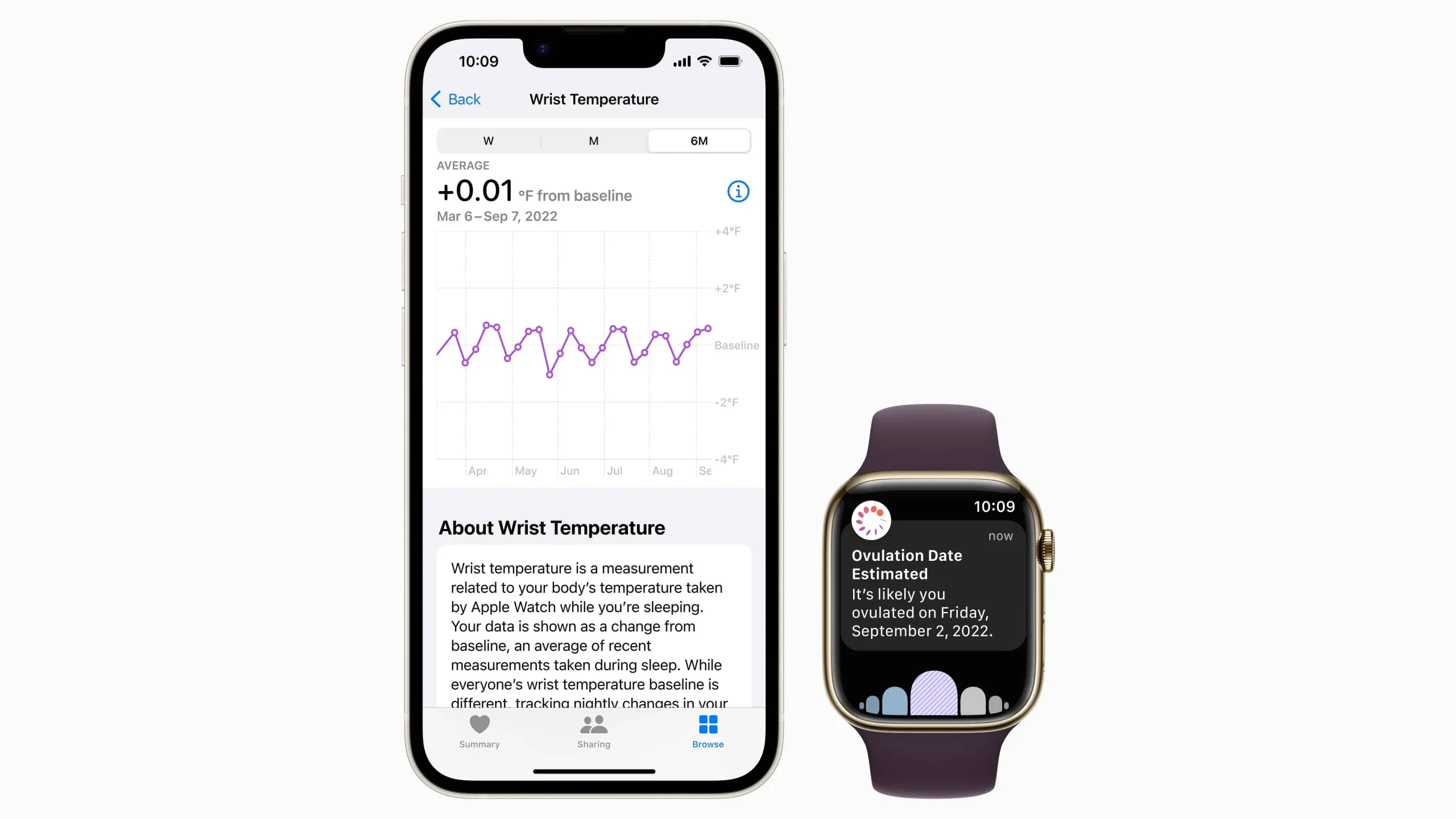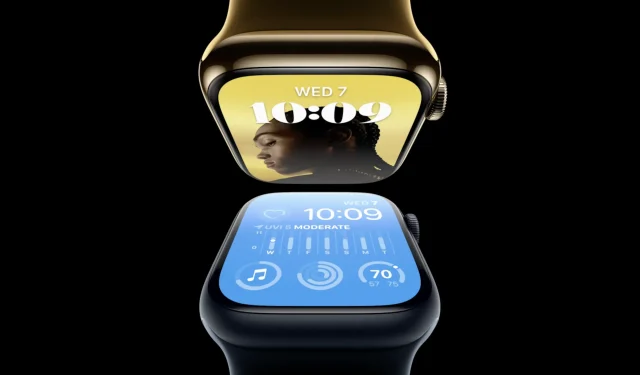Learn how to set up and calibrate your Apple Watch temperature sensor so you can measure your core wrist temperature and start tracking changes.
How Apple Watch Measures Core Wrist Temperature
Apple Watch Ultra and Apple Watch Series 8 feature a new sensor that measures skin and ambient temperature. Apple has stated (and written in its patent) that it actually requires two sensors to reliably detect skin temperature, one on the back that contacts your skin, and another just below the display to measure ambient temperature. The algorithm feeds data from two sensors to accurately calculate the temperature at the surface of your skin.
Apple’s support document clarifies that a five-day calibration period is required before the watch can set the wrist’s base temperature.
“After about five nights, your Apple Watch will determine your wrist’s baseline temperature and track its nighttime changes,” the post reads.
How to Track Wrist Temperature Changes with Apple Watch
Wrist temperature tracking and related features require Apple Watch Series 8 or Apple Watch Ultra. Older models do not support this feature. You will need to set up the sleep feature with “Sleep Tracking with Apple Watch”turned on. Be sure to also turn on Sleep Focus for at least four hours a day for about five nights.
You can view your saved measurements by launching the Health app on your iPhone, then go to Overview → Body Measurements → Wrist Temperature.

If the sensor is not calibrated, you will see the message “More Data Needed”at the top of the chart instead of the actual reading. You’ll also see the number of nights left before your wrist temperature data becomes available right below the chart.
How to interpret stored wrist temperature data
The unit for each night is displayed in the Health app as relative changes compared to the set wrist base temperature. Since fluctuations in body temperature each night can be indicative of illness or a menstrual cycle, relative changes give you a better idea of your overall health.
Apple Watch Series 8 and Ultra also support cycle tracking, which predicts ovulation by monitoring changes in wrist temperature while you sleep.
When You Need to Recalibrate Your Sensor
This five-day calibration only needs to be done once per watch. After calibrating the sensor, the watch will measure the temperature of the wrist every five seconds. Apple explains that this improves accuracy by reducing bias from the external environment. Read: How to calibrate a fitness tracker on Apple Watch
If the watch is repaired or you are connecting a new one, you will need to re-calibrate the sensor within five nights. Factors that can knock the sensor off include a loose fit (make sure the back crystal is in contact with your wrist), your age (you must be at least 14), and “certain physiological, lifestyle, and environmental factors.”
How to disable wrist temperature and tracking
To turn off wrist temperature, open the Watch app on iPhone and go to My Watch → Privacy → Wrist Temperature, then disable the feature from there.
To turn off nighttime wrist temperature tracking, open the Health app on your iPhone and go to Overview → Cycle Tracking → Options, then turn off Use Wrist Temperature. This will also turn off historical ovulation estimates and period predictions.
Can I take my wrist temperature on request?
No, you can’t use your Apple Watch to measure your wrist temperature at any time, just like you can measure your heart rate. The device automatically polls the sensor every five seconds when Sleep Focus is active. You can see a history of relative changes in your set wrist temperature in the Health app, but that’s about it.
Can Apple Watch be used as a thermometer?
Nope. Neither Apple’s temperature sensor nor its algorithm is a thermometer.
Is the Apple Watch a medical device?
Just because they can measure heart rate or wrist temperature doesn’t mean the Apple Watch is a medical device. Apple clearly states in black and white that the temperature measurement feature is “not intended for use in medical diagnosis, treatment, or any other medical purpose.”


